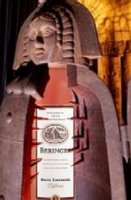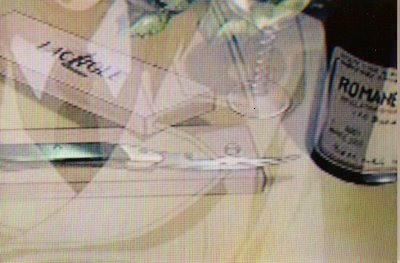There are many indicators that the recovery for the wine industry is NOT on the doorstep right now for some of the larger wineries. Normally, this time of year sees frantic bottling as wineries across the state try to get tanks emptied for use in the coming harvest. Not so this year....
Several larger wineries have suspended bottling of their wines off and on over the past 8 months. This is due to lackluster sales keeping the products in the warehouses instead of heading out to the consumers. If your warehouse is plugged full, you have nowhere to put the product. If you're going to have hold wine in a warehouse due to slow sales, the rule of thumb is to avoid the extra expense of putting the wine in the bottle in the first place. This saves the headache of needing to either decant the wines for bulk wine sale or remove the labels at the very least for another winery which might buy your wines from you to generate cash flow.
Some of the larger wineries I know have crews which are near panic, as they turn the proverbial spigots off and on again to drain tanks for the coming harvest. Also, there's only so much cleaning you can do when you're supposed to normally be bottling. Then there's a cascade effect as the wines normally to be trucked from one place to another no longer need to be shipped - so more truck drivers stand idle, and trucking companies start hurting. Wines no longer on the fast track to the bottle don't need as much work done to them, so the cellar crews start looking like they have too many people on them to the bean-counters, and discussion starts about cutting them back or temporarily having them work only partial weeks (if not to lay them off entirely until the next harvest starts). Lab analysis also is put on a back burner, so testing companies like Vinquiry or Enologix might be seeing reduced work loads. Then there are the companies providing labels, bottling glass, glue, corks, capsules, etc....all of which also feel the pinch from the lack of forward momentum on the bottling lines.
And it goes on from there....
The problem is that tanks should all be emptied for the harvest which has already started, and winery management will be trying hard to minimize capital outlay for bottling, while they create space needed for the incoming fruit. It is a very delicate balance to maintain, and requires a great deal of communication between the vineyard, cellar and the marketing teams.We all would have been better served by Nature if the current harvest was a bit smaller than normal, which it isn't. The only silver lining to our plight is that the harvest may run a bit longer than normal, and we may have time to turn the tanks over for another round without having to "short vat" too much of the initial onslaught due to the hot weather we're having.
What's it mean to the consumer?
There are some wines being discounted, but that shoe is only now starting to hit the floor. The bigger concern is for the financial performance of the wineries. This is their "stress test", where we will learn if their high paid marketing and promotion staff are worth their salt. But they hold a double-edged sword, as dropping the prices moves more product, but cuts the amount of revenue they generate (doubtless they had more profits penciled into their business plans, and one thing owners and bean-counters abhor is the dreaded "write down" of inventory valuation). Another problem for large wineries is that almost all of them have tried to position themselves up-market in the past few years, and that's the sector which is hurting the most. All we need to do is look to
the article in the Press Democrat today to see many of the higher end wineries feeling the crunch. The tone of the article is spot-on, but some of the concluding thoughts are a bit optimistic...
Fred Reno is right that this isn't a 1~2 year dip...and three years is a bit too short also. I don't see the high end ever fully recovering...well, at least not until the next generation of wine drinkers hits the market. And even then, that prospect is "iffy".
I'd say it's more likely to be "near" to where it was before this mess started within a decade, but owners and marketers will have a tough time getting the same people to buy the highest priced wines when their eyes have been opened to great tasting wines at lower prices. I liken it to my grandparent's need to have "mad money" in their pockets after they survived the depression, or their need to have a well stocked pantry decades after the end of those difficult economic times ("mad money" was their name for the $20~$50 they always had on hand in cash for quick purchases - people told them they were mad not to put all their money back into the banking system, which was deemed "bulletproof" after the government regulations were in place). Even though the danger was long since removed, they had a difficult time getting their heads back to the spend-freely attitudes they had prior to the bad times. I don't see the current purchasers going back in that direction, not that the sales of Two-Buck-Chuck will always be booming like they are now, but they won't go back to buying wines priced as high as they had purchased in the past.
What - and wine sales are down in restaurants? Because people don't want to pay double the price they'd pay in a retail environment to get the same wine? Do tell!
People are going to be much more frugal as they come back into the market. Wine sales in the high end are seeing something that should've happened a long time ago: a correction to deflate some of the ego driven inflation that has injected itself into the process.
So what if someone starts a winery from scratch and wants to put the first vintage out at $100/btl?
I say let 'em fail. It's not pretty, but if you're stupid enough to put wines out there at that price right now, then you are getting what you deserve to see them stagnate and not move at all.
After all, it's frickin' fermented grape juice, nothing more....so why were people paying those incredible prices to begin with?
If you're a winery owner or marketing type who asks me today what's going wrong with your business plan the first thing I'll ask you is, "why aren't you discounting more heavily?"Labels: branding, investing, marketing, shipping














